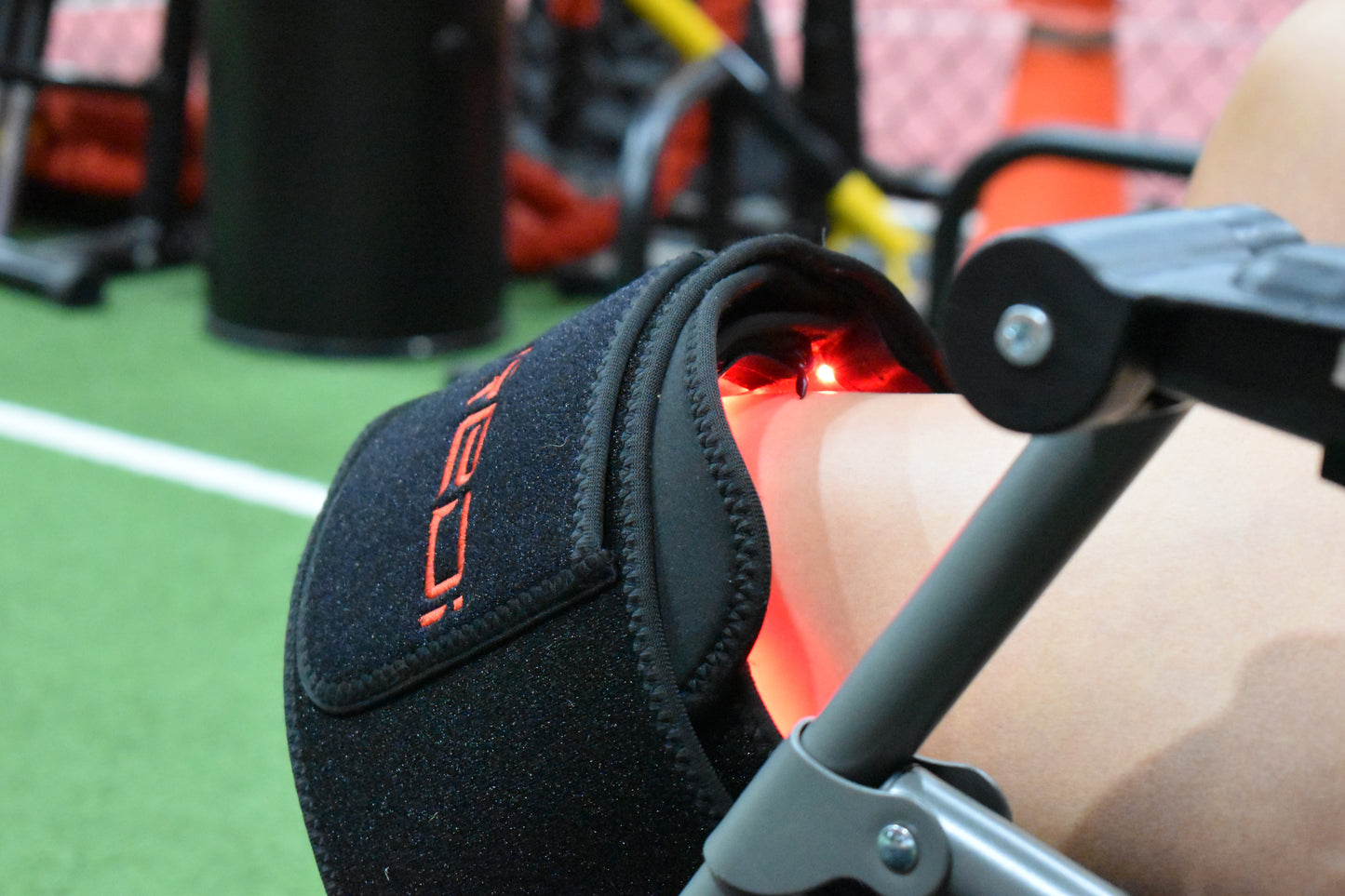Red Light Therapy
What is Red Light?
How does it work?
Red light, at specific wavelengths, is readily absorbed by chromophores in the mitochondria of the body’s cells, which activates metabolic energy processes. Red and near-infrared wavelengths of light promote ATP production, which boosts energy transport within cells, leading to increased cell proliferation.
This boost in the body’s natural healing cycle helps reduce inflammation and promotes healing of damaged tissue.
What makes red light different from other forms of light is its ability to penetrate deeper into the skin. While blue and ultraviolet light mainly affects the upper layers of skin, red light can be absorbed by cells deep in the body. Red light therapy is also referred to as photobiomodulation therapy because of the change in the body induced by light, including reducing free radicals and oxidative stress.
What is the Mitochondria?
Mitochondria are membrane-bound cell organelles (mitochondrion, singular) that generate most of the chemical energy needed to power the cell's biochemical reactions. Chemical energy produced by the mitochondria is stored in a small molecule called adenosine triphosphate (ATP). They are responsible for orchestrating cellular energy production, they are central to the maintenance of life and the gatekeepers of cell death
study mitochondrial physiology and dysfunction and the interaction between mitochondria and other subcellular organelles and for treatment of a variety of diseases such as neurodegeneration and cancer.
Mitochondria are recognized as one of the most important targets for new drug design in cancer, cardiovascular, and neurological diseases.
Benefits of Red Light?
Red light, at specific wavelengths, is readily absorbed by chromophores in the mitochondria of the body’s cells, which activates metabolic energy processes. Red and near-infrared wavelengths of light promote ATP production, which boosts energy transport within cells, leading to increased cell proliferation.
This boost in the body’s natural healing cycle helps reduce inflammation and promotes healing of damaged tissue.
Free radicals (including ROS) are produced on the impact of indirect, low laser radiation. High levels of ROS are known to be cytotoxic, leading to multiple signaling cascades being interrupted. However, in low levels, ROS can be beneficial to red blood cells and induce apoptosis in breast cancer MCF-4 and pre-osteoblastic MC3T3 cells, by acting as secondary messengers to various signalling pathways. ROS can generate normal metabolism in the production of ATP synthesis and regulate proteins that are affected by redox reactions and involved in proliferation and differentiation.

REDi Recovery
REDi Anywhere - Sold Out - Pre order SALE for our 6th restock!
Share







